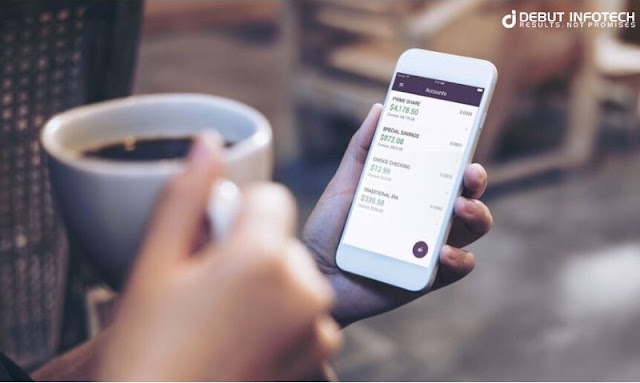Why mobile apps are Crucial for Banking and Financial sector
In this tech-savvy era, technological advancements have brought a plethora of changes in almost every facet of people’s lives. Technology is evolving at a very high speed and people are getting more dependent on it. Mobile devices that were considered sluggish before a decade appear brisk today. In the current scenario, our lives have been largely dictated by android phones, iPhones, tablets, etc. and these gizmos have changed our lifestyle for the better. Mobile apps are continuously reshaping the world and every industry is eager to associate themselves with them to connect well with their customers. That’s why the banking and financial sector cannot keep itself disassociated from the mobile apps either.
Everyday evolving mobile apps have changed the entire functioning of banking by shifting the focus from desktop towards the smartphone screens. From balance inquiry to swift transactions, every banking activity is now at your fingertips. Today, people no longer need to stand in endless queues to perform their financial transactions. Whether you want to perform an online transaction or transfer money from one account to another, you can effortlessly manage your bank account on the move with these interactive mobile apps. In the lieu of competing in this ever-evolving fierce market, every bank is coming up with its own mobile app to provide a satisfactory and hassle-free experience to its customers.
Below are the top four reasons why mobile apps are important for banking and why you should hire a reliable mobile app development company to build a robust banking app for your business. So, without any further ado, let’s dive right in.
Reduced bank’s expenses
The arrival of mobile apps has reduced the overall bank’s expenses by saving money on printing and delivery, helping them go paperless & environment-friendly while offering them cheaper transactions as compared to ATM transactions. Banking apps not only satisfy the customers’ demands but also decrease the need for physical branch banks, thereby reducing their operational costs. As per the recent reports by Deloitte, the cost of mobile transactions in the future would become ten times lower than ATM transactions and fifty times lower than transactions via banks.
Improved user engagement:
Earlier, people used to go to banks for even a simple money transfer; however today, banking has become enormously easy, thanks to the advent of several banking mobile applications. Whether it’s a telecom company or a bank, positive customer experience is always paramount to any business. With banking apps, users can access their bank accounts whenever they want. The instant gratification and round-the-clock services make users engaged, satisfied and loyal to the banking apps. Moreover, mobile banking helps customers keep all their banking records under control so that they could get account alerts, monitor their balances, check deposits and transfer money instantly.
Enhanced security:
It is one of the most important concerns in present times, especially for the people associated with the banking sector. The myth that mobile apps are not secure for banking has got busted over the years. In order to provide smooth and secure user experience, every bank is integrating security solutions like biometric data like fingerprints, gesture patterns and retina scans in its mobile app in addition to traditional passwords and two-factor authentication. Almost all banking authorities are using encryption to protect financial information which means even if a customer loses their cell phone, the banking data would remain safe.
Collecting customer analytics:
Banking apps are the best source to collect and analyze actionable metrics. The analytics and metrics help banks to understand how new and potential users interact with their apps. Metrics which could be divided into three categories namely customer satisfaction, app performance, and acquisition metrics can be analyzed using mobile banking. By monitoring user satisfaction and engagement, banks could primarily focus on the user experience. Performance metrics help in determining why a mobile banking app might have a high churn and abandonment rate while acquisition metrics help you track the number of downloads and where they’re coming from.
While these were some benefits of using mobile apps in the banking and financial sector, there are many more such as remote data access, faster and productive solutions, time-saving, etc. The advancement of mobile apps is like a win-win situation for both banks and users. Over the last decade, the popularity of mobile banking apps has consistently been on an upward trajectory, especially among millennials. In the age of the internet, many people are considering it a boon and you will see a gazillion of people getting hooked to mobile banking in the coming future.
Ready to leverage the benefits of a mobile banking app? Get in touch with our expert team of mobile app developers.



Comments
Post a Comment